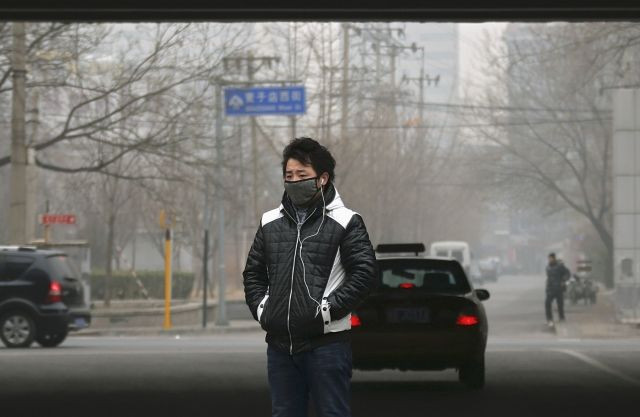Fewer Chinese Cities Have Safe Air, China Government Environment Report Says

Only 27 out of 113 major cities in China met air quality safety standards last year, an annual report from the Chinese government released on Tuesday said, as pollution has emerged as one of the most serious challenges facing the nation.
China’s Ministry of Environmental Protection said pollution in rural areas was also worsening, due to an increase in industrial and mining activities, as well as animal husbandry, South China Morning Post reported.
The report said 30 percent of the country’s major rivers were polluted, while 60 percent of tested groundwater was of “bad” quality.
The Chinese government has been facing increasing criticism from affluent urban residents, who object to the country’s policy of growth at all costs, ignoring environmental concerns.
Recent instances of heavy air pollution in several cities, including the capital, Beijing, and a series of food safety scandals have upped the pressure on authorities to seek action.
The government is expected to introduce tough environmental laws within this month to cut industrial emissions.
However, rural pollution may continue to be a challenge for the government, as experts say that China’s farms pose a greater threat to environment quality compared to the sources of pollution in urban areas, Reuters reported.
“With industrialization, urbanization and the modernization of agriculture, the situation for the rural environment has become grim,” the ministry report said. “The stand out points are an increase in pressure from mining pollution ... and severe pollution from the raising of livestock and poultry.”
The report has come under criticism for failing to mention findings of a national survey on soil pollution, and recent scandals involving rice contaminated by cadmium.
The report found a nominal reduction in emissions of pollutants from coal combustion and car exhausts, but it did not reveal any data on PM2.5 levels, which indicate the amount of particles found in the air, including dust, dirt, soot, smoke, and liquid droplets, considered a major health hazard and are largely caused by the combustion process in motor vehicles and industrial processes, among others.
The ministry said the air quality of 100 out of 113 cities could have been safe if they were assessed based on an old set of rules, which are now outdated after a new set of standards were put in place this year, SCMP reported.
© Copyright IBTimes 2025. All rights reserved.






















